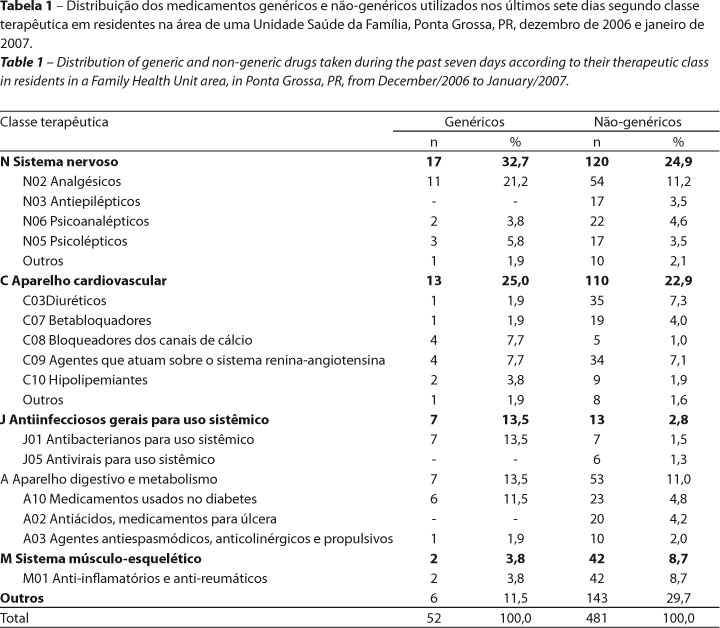The objective of the study was to estimate the prevalence of generics and their associated factors in a population of adults aged 20 to 59 years. The sample consisted of 374 individuals from the catchment area of a Family Health Unit in Ponta Grossa, PR, Brazil. Data were collected in home interviews. Study variables were divided into 3 groups: sociodemographic, health status and the use of health services. The chi-square test was used for statistical analysis. The prevalence of generics was 9.9%. Of those interviewed, 96.5% claimed to know about generic drugs, 64.3% believed they had the same quality as brand-name drugs and 88.9% reported they were cheaper. The most commonly-used groups of drugs were those for the nervous system and those for the cardiovascular system. After univariate analysis, the following factors were found to be statistically significant: economic status, employment status, health insurance, presence of chronic disease, medical consultation in the previous three months and hospitalization within the previous 12 months. The low prevalence of the use of generic drugs emphasizes the fact that stronger policies are needed to make generics available to the public, especially through the Family Health Strategy, since it is the studied population's principal form of access to these medications.
Generic drugs; Drug utilization; Pharmacoepidemiology; Cross-Sectional Studies; Adult; Family Health Program


